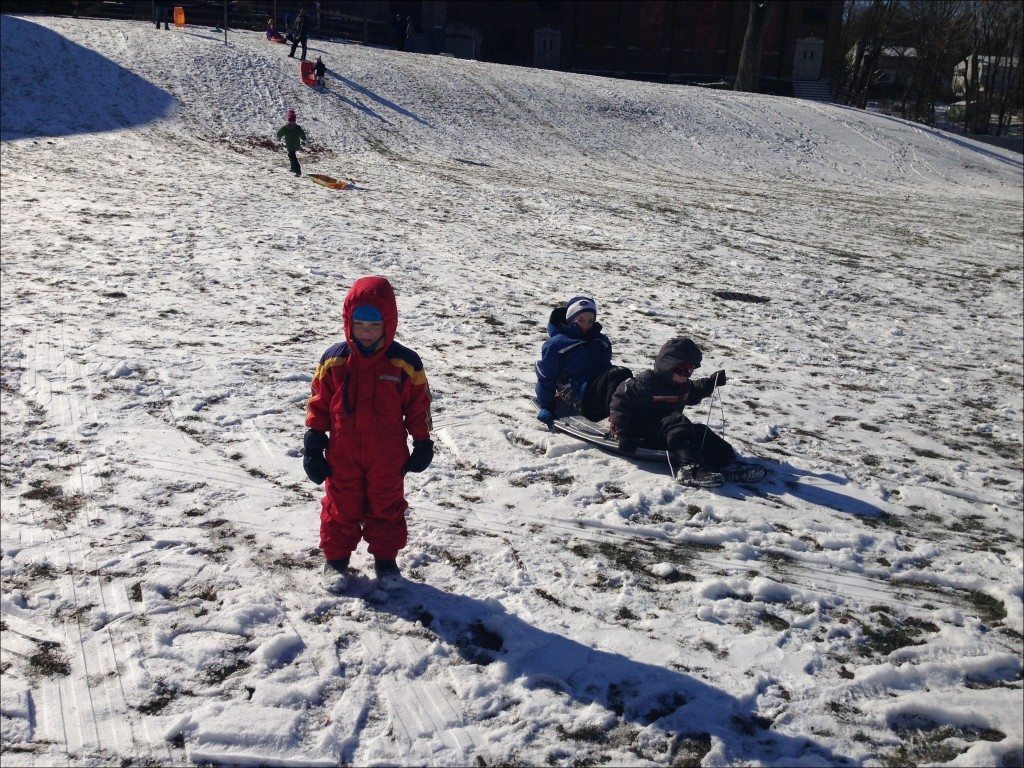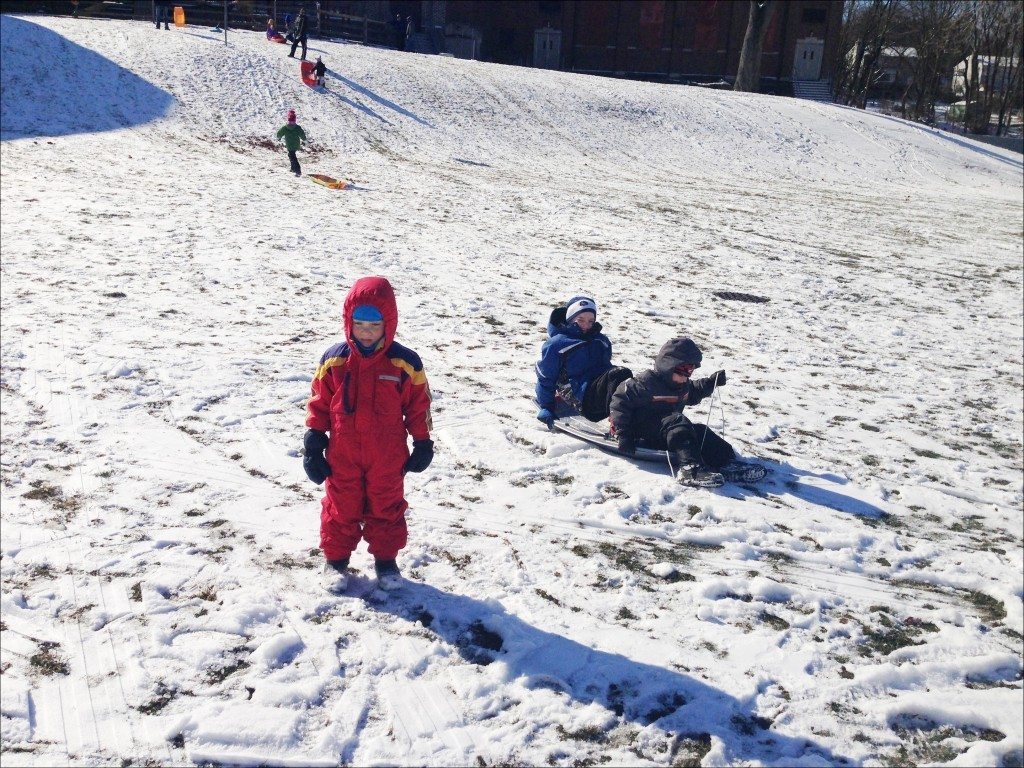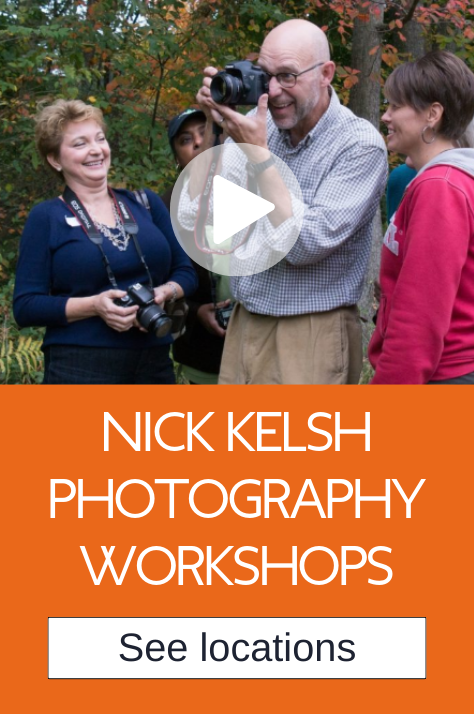There’s a reason the snow in many of your sledding pictures is gray. Ironically, it’s because snow is white therefore it’s gray.
Sorry if I’m talking in riddles here but the reason many of you have snow pictures that are too dark is because the snow is bright white. It has fooled you and your light meter. Light meters want to make everything medium bright—including snow. Therefore if you center that light meter needle in your viewfinder on zero when you’re looking at an overall white scene—like our snow example—you’re going to get a picture that’s too dark. (It’s so counterintuitive that to this day I have to reread my own descriptions of this problem to make sure I haven’t got it backwards, so you’re not the only one who has trouble wrapping your brain around this. Snow should be overexposed! I know! I know! It’s nutty.)
So I hear many of you saying something like this:
Well, why don’t I just use auto-exposure and everything will be just fine?
Auto-exposure is as easily fooled in this situation as you, the manual photographer. Whether you’re in auto-exposure or manual exposure, snow needs to be compensated for.
When you’re shooting manually you need to realize that the snow is going to be too dark and therefore you need to brighten the exposure by about 2 f-stops. (There are lots of variables here. There are all kinds of different shades of snow, but 2 f-stops is a good place to start.)
When you’re in auto-exposure, you need to use something that’s called your Exposure Compensation button. Using that button, you can tell the camera to overexpose the next picture by how ever many f-stops you want to. (Don’t forget to turn it back to zero when you get back to a normal scene. Remember, the Exposure Compensation button is only used when you are in one of the auto exposure modes. This button has no effect on your exposure when you are in complete manual mode.)
Snow can be tricky so don’t feel bad. You just need to know that it’s tricky and deal with it. Say this ten times:
Overexpose for snow.
Overexpose for snow.
Overexpose for snow.
Overexpose for snow.
Overexpose for snow.
Overexpose for snow.
Overexpose for snow.
Overexpose for snow.
Overexpose for snow.
Overexpose for snow.
Counter-intuitive but true.
If you want to see detail in your little sledders you need to expose for the kids and not the snow covered hill. If you take a light reading off of a snowy hill, you need to brighten your exposure to make up for it.





